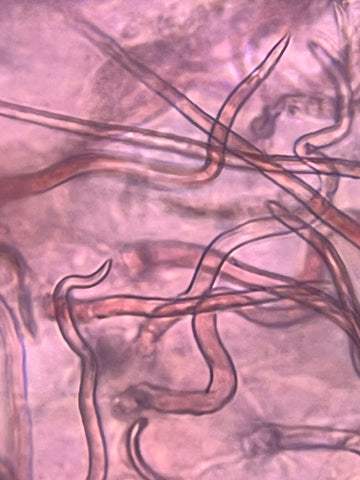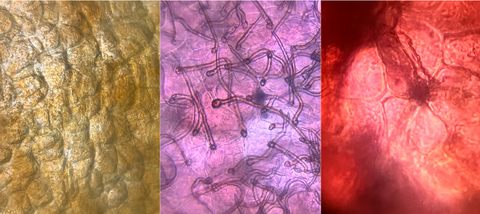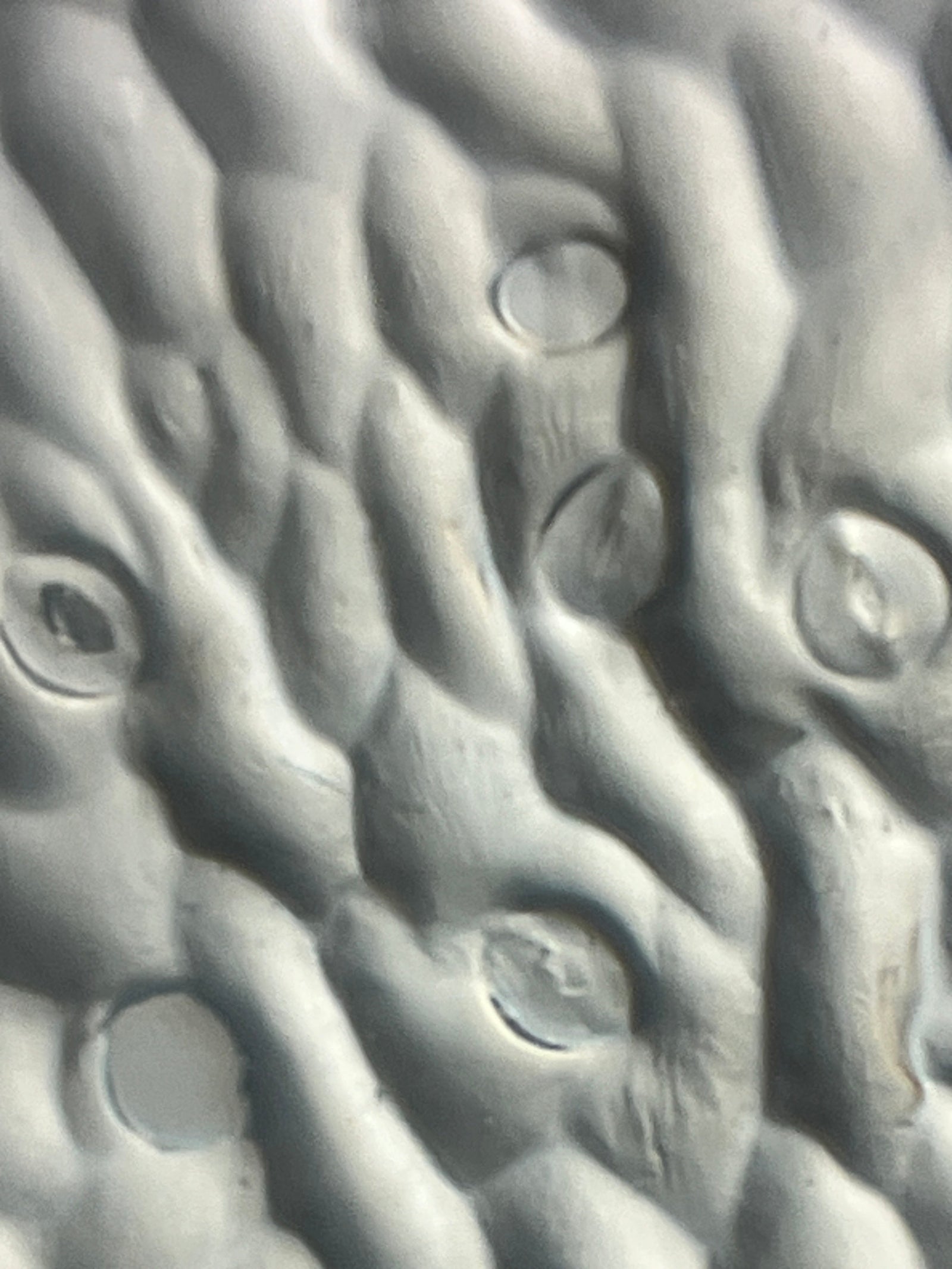I have seen a lot of red foods lately and I took that as a sign that I should put them under my Foldscope 2.0! Read on to find out what the color red looks like on a microscopic level!

Red Peppers
I love the taste of a bright red pepper. They are crunchy and sweet and make me think of my summer garden. The smooth red skin of a pepper standing out on a green pepper plant is striking to behold!
To prepare the slide, I peeled a very thin layer of the skin of the pepper away from the inner portion. I placed the thin slice on a glass slide and covered it with a glass cover slip.
When viewing the skin of a red pepper under my Foldscope 2.0, I noticed that the texture of the pepper skin was not smooth at all. It looked like the patterns from the skin on the back of my hand. Also, I did not see a uniform red color. Instead, there were pockets of red pigment (the two chemicals responsible for the red color are capsanthin and capsorubin) visible inside the cell walls.

Raspberries
Juicy red raspberries are such a special treat! Each delicate fruit is composed of a group of drupelets, with each drupelet containing one seed. Each drupelet also has a single hair growing from it called a style. Initially, I wanted to take a look at the skin of a drupelet and the style under my Foldscope 2.0. What I found was surprising!
To prepare the slide, I used very sharp tweezers to peel the thin layer of the skin of a drupelet away from the fruit. I placed the skin on a glass slide and covered it with a glass cover slip.
The first thing I noticed was that the skin was covered with hairs! I did some research and found out that these hairs are called trichomes. These trichomes provide a level of defense for the raspberry fruits including physical (they reduce water loss from evaporation) and chemical (they produce chemicals that keep insects away) protection. And, even though they looked red on a macroscopic scale, I observed a beautiful pink hue on the microscopic scale.

Strawberries
Fresh juicy red strawberries are so delicious! They are the first fruits to ripen in the spring and they carry their seeds on the outside (about 200 of them per fruit!). I couldn’t wait to see what strawberries looked like under my Foldscope 2.0!
To prepare the slide, I cut a very thin cross section of fruit that was close to the bottom of the strawberry. I placed the thin slice on a glass slide and covered it with a glass cover slip.
The strawberry was the first fruit that actually looked red on the microscopic scale! In addition to the brilliant red color, I could see the irregular shape of the plant cells. The cell walls stood out clearly under my Foldscope 2.0.

I enjoyed this brief study of the color red. The surprising way that colors appear under a Foldscope is part of what makes microscopy so fun! You really never know what you are going to see when you place a slide under your Foldscope. It is an opportunity to explore a world of wonder and beauty any time you want to!

Have you explored the color red under a Foldscope 2.0? Use your Foldscope to dive into the microscopic world and find the beauty that is there waiting for you. Share your microscopic images and thoughts on the Microcosmos. Be sure to tag us on social media when you post the results of your explorations, creations, and discoveries! We love to see how Foldscopers around the world are using their Foldscopes in new and innovative ways!
Facebook: @Foldscope
Twitter: @TeamFoldscope
Instagram: @teamfoldscope
Threads: @teamfoldscope
Sources:
Red Bell Peppers: https://www.compoundchem.com/2016/07/05/bell-peppers/
Raspberries: https://www.bonappetit.com/story/raspberries-hairs-trichomes
Strawberries: https://www.farmersalmanac.com/strawberry-facts



